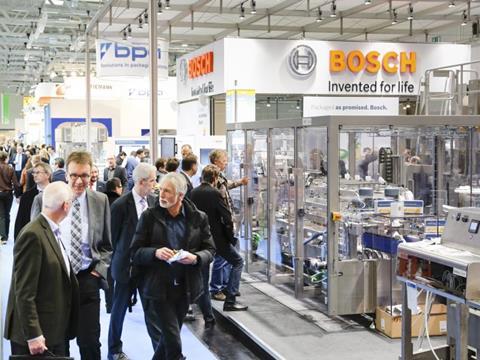
Whether fresh milk, yoghurt or fruit juice, the market for aseptically filled beverages is growing. The flip side of the coin: Food manufacturers have to be even more consistent in ensuring hygienically impeccable production conditions.
Physical processes for preservation and aseptically filling systems come to their aid here, like those that will be the centre of attention at Anuga FoodTec in Cologne from 20 to 23 March 2018.
Today, foodstuffs have to be as fresh and as untreated as possible - according to the consumer demands at the point of sale. The trend towards natural food leads to the manufacturers having to adhere to extremely high hygiene standards in the production, if they want to do without the implementation of preservatives and high temperatures during the preserving process. Minimal processing is the key term under which Anuga FoodTec is bundling the related necessary techniques and systems at the fair grounds.
Aseptic through a sterile food environment
The cold-aseptic filling process into plastic bottles or beverage cartons is considered worldwide to be the supreme discipline in this area - a process that fills a receptacle with a commercial sterile beverage or foodstuff using food technology related sterile machinery. The entire production is carried out in a low-germ environment, in the course of which the foodstuff and the packing materials are sterilised separately and brought together under aseptic conditions. Such a sterile food environment is essential for aseptic filling - especially when sensitive products are filled that have a low level of self-protection against the growth of microorganisms. Guaranteeing this is no easy task for the producers - after all in addition to the technological aspects, the related costs also play an important role in the investment decision-making process.
Minimising the critical section
In the sections of the machinery that products come into contact with, an area around the machinery has to be created where the sterile conditions are maintained. In order to increase the security of the cold-aseptic filling as well as its economic efficiency, the machine builders pursue above all one aim: The critical sections that come into contact with products should be kept as small and simple as possible. The more complex a filling system is, the more costly it is to ensure permanent aseptic conditions. However, clean rooms are not implemented for all aseptic systems. In some cases, an aseptic zone is implemented, which is kept aseptic using a positive displacement flow of sterile air.
Ways towards sterilisation
The prerequisite for aseptic conditions is the easy-to-clean design and the reliable cleaning of systems, machinery, devices and components as well as if necessary the process environment, if it is classified as coming into contact with the products. The sterilisation has to be maintained throughout the entire production time. The packing material and packing aids have to fulfil the same prerequisites. This means they have to be cleanable and sterilisable and aseptically fillable. Depending on the packing material different techniques can be implemented for aseptic systems: Sterilisation using hydrogen peroxide (dry aseptic) or using peracetic acid (wet-aseptic). Sometimes the techniques are also combined. The sterilisation of the packing material can also be carried out on the preforms. Pulsed-light is a further technique. The principle: A high-intensity flash impacts for around 0.3 seconds on the surfaces of the cups and lids sterilising them effectively.
The outlook for Anuga FoodTec 2018 shows: There is a high demand for cold-aseptic processes among the food and beverage manufacturers. Here, pieces of fruit and vegetable have recently come under focus, which until now could only be hot-filled - an aspect that will no doubt play a role in the guided tours of the dairy technology at Anuga FoodTec. In the course of a one-hour tour around the trade fair, exhibitors will each have ten minutes to present innovative products including aseptic lines and ready-to-use filling systems.
More info:











